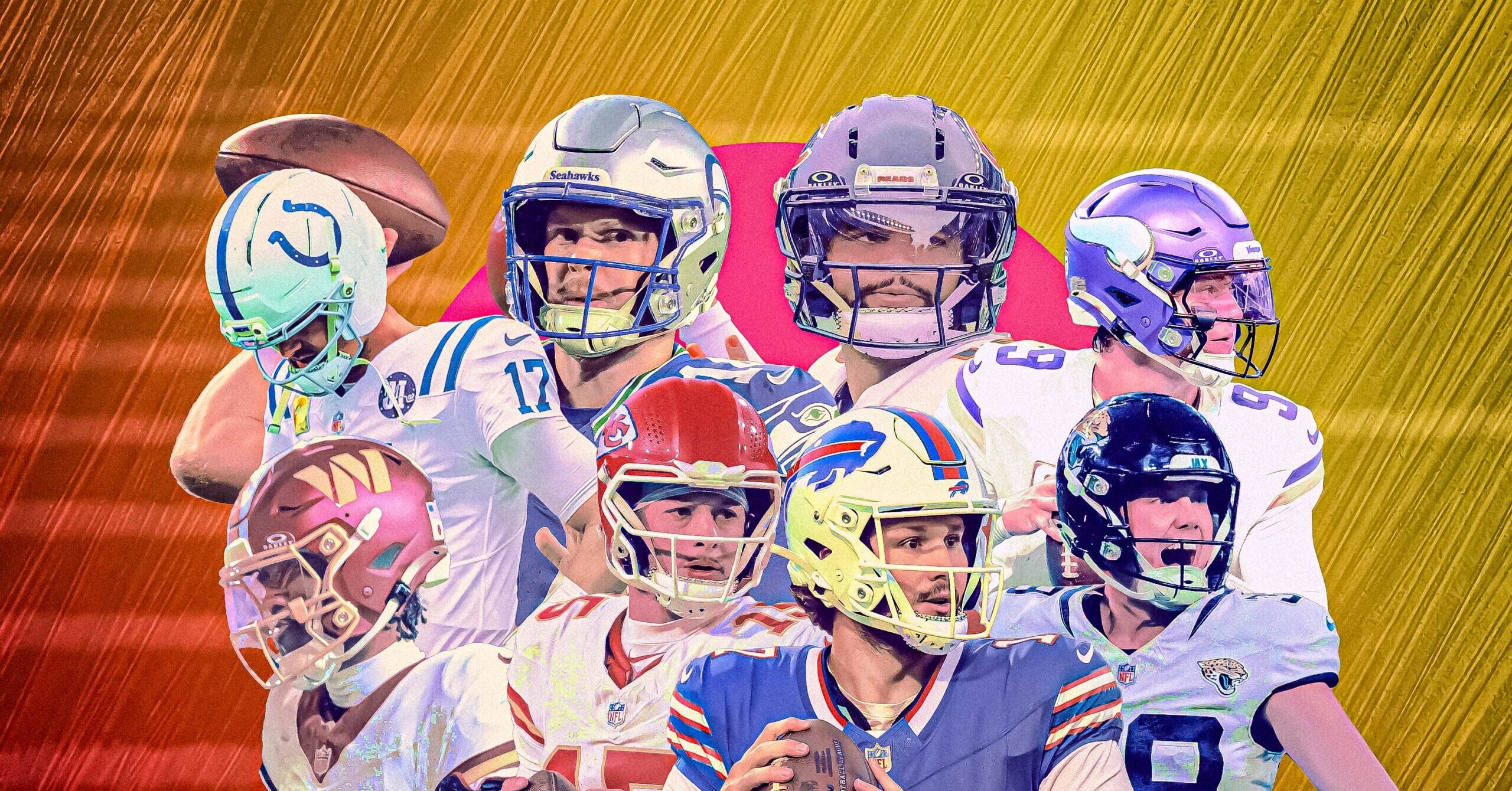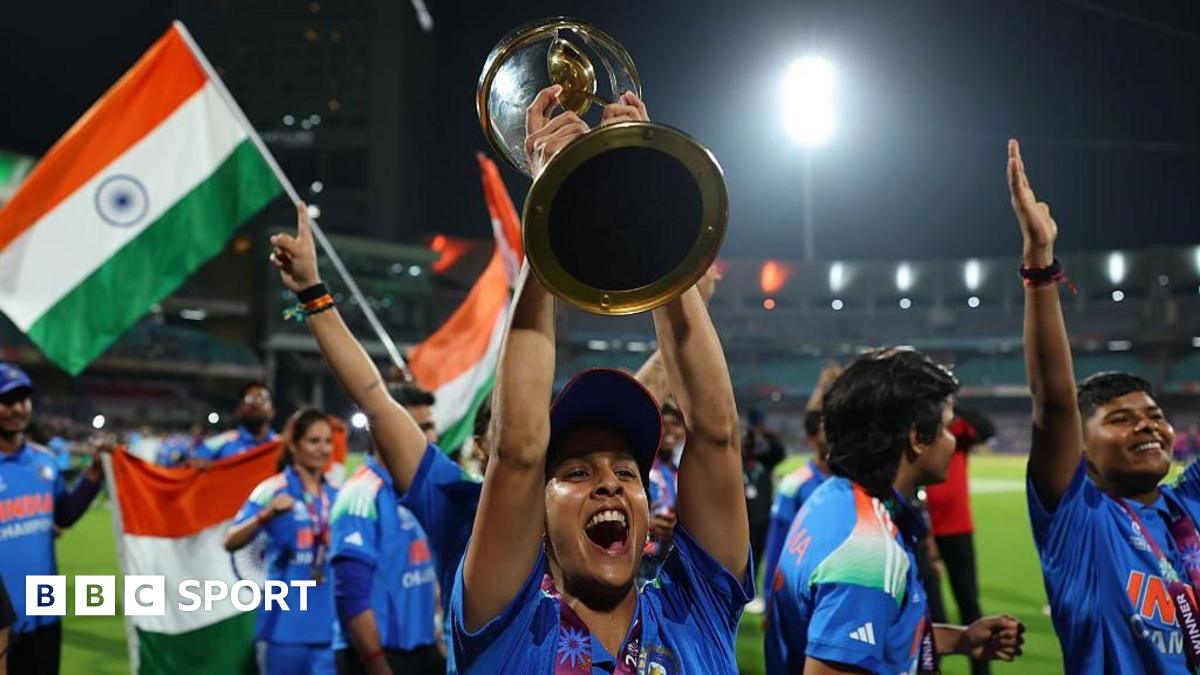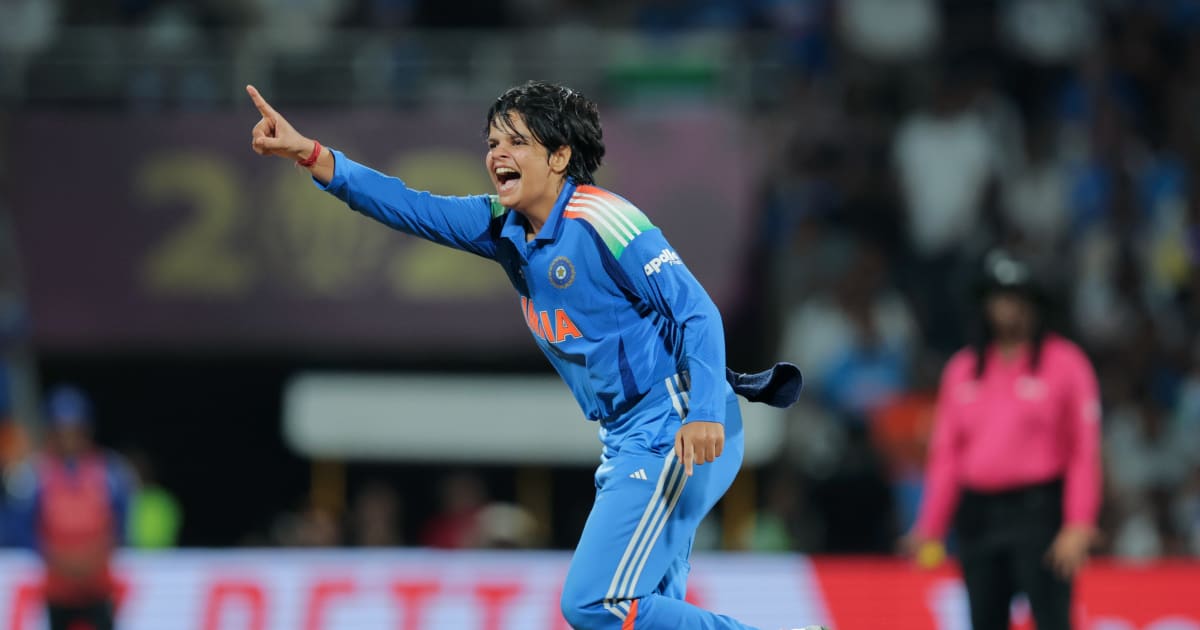The Winners and Losers of the NFL Week 9

Every week this NFL season, we will break down the highs and lows—and everything in between—from the most recent slate of pro football. This week, Sam Darnold was nearly perfect, Jayden Daniels got hurt (again), the Bills picked up yet another regular-season win over the Chiefs, the Colts offense came down to earth, Jacksonville’s Cam Little boomed the longest field goal in league history, and more. Welcome to Winners and Losers.Winner: The Bills-Chiefs RivalrySunday marked the 10th time we’ve seen Patrick Mahomes’s Chiefs take on Josh Allen’s Bills since 2020, and somehow the matchup still doesn’t feel stale. Whenever they meet up, it feels like the biggest game in football, and Sunday was no different. Their teams traded early blows before both defenses adjusted and tightened up in the second half. Every drive felt important. Every stop felt like a triumph. I’m all for parity and the league having a fresh crop of winning teams, but based on what we saw from these two quarterbacks on Sunday at Highmark Stadium, I’d sign up for another Bills-Chiefs AFC title game this season. Hell, put both of these teams in the same division so we get three of these games each year.Buffalo, we must mention, won this installment 28-21. It’s the fifth regular-season win over the Chiefs in a row for the Bills, though Buffalo hasn’t yet had any postseason success in the rivalry. But this could be the year Buffalo gets the best of the Chiefs when it counts, if its defense can replicate the game it played on Sunday. It started with the pass rush, which pressured Mahomes on over half of his dropbacks, per Next Gen Stats. Mahomes’s pressure rate was actually higher than his completion rate on the day; he completed just 15 of 34 passes for 250 yards. About half of those completions were short screen passes out to the perimeter, and the other half were the result of Mahomes’s out-of-structure magic—that’s how it felt at least. Kansas City’s downfield passing game that we’ve seen in recent weeks never found a rhythm.The Bills’ secondary also deserves some credit. It stuck tight to routes all game, whether Buffalo was in man coverage or its matchup zone coverages. The defense finished with five forced incompletions, per Pro Football Focus. That’s the most the Bills have forced against Mahomes in any of their 10 matchups. Safety Cole Bishop had most of them, including a key fourth-down stop and multiple pass breakups on third downs. In a game that featured two MVP winners, I’d argue that the second-year safety was the most impactful player on the field. Buffalo also got a big game out of first-round rookie cornerback Maxwell Hairston, who logged his first NFL interception in his second game back from a PCL injury he suffered in training camp.Allen didn’t have a prolific day, but he was efficient, completing 23 of 26 passes for 273 yards and a touchdown. He also scored twice on quarterback sneaks. Running back James Cook did the rest of the heavy lifting for Buffalo’s offense, running for 114 yards on 27 carries. Kansas City’s defense had few answers for Buffalo’s run game early, which forced Steve Spagnuolo to start sending run blitzes on early downs. Allen has had trouble finding open receivers downfield this season, but having that sort of success with the run game on Sunday unlocked that area of the field against Kansas City, and Allen hit on a number of downfield throws off play-action.I don’t want to draw any firm conclusions from the outcome, given these teams’ playoff history, but Buffalo was in control for most of Sunday’s contest. If not for kicker Matt Prater doinking one off the post in the final minute, the Bills would have won by double digits—which feels like a more appropriate margin of victory based on how the game went. I’m not sure what this all means for a potential rematch in the postseason, but I sure would like to find out. Who’s up for Mahomes-Allen XI in late January?Winner: Mike TomlinismsI love the way Mike Tomlin talks about football. No coach in the league does it like him. The Steelers didn’t slow down Jonathan Taylor on Sunday. According to Tomlin, they “minimized the runner” in their win over the Colts. “I can’t say enough about the defense’s effort to minimize the runner,” Tomlin said after watching his team move to 5-3 with a 27-20 win. “I don’t think you slow that group down unless you minimize the runner. And we were able to do that, and I think that’s why we were able to get them in some one-dimensional circumstances, create some pressure, get some sacks and the turnovers that go along with that.”While Taylor finished the game with an efficient 50 percent success rate, his longest run went for just 9 yards. Indianapolis didn’t log one explosive run in a game for the first time all season. As Tomlin said, that put Daniel Jones in the kind of uncomfortable pass situations Shane Steichen’s offense has helped the quarterback avoid this year. The result was an ugly five-turnover game for Jones that reminded us of the quarterback we saw during his years with the Giants. But outside of those five plays (three interceptions and two lost fumbles), the Colts moved the ball just fine against Pittsburgh. They averaged 0.23 EPA per play and a 52.7 percent success rate on the snaps that didn’t end with a turnover, per TruMedia. That was comfortably better than the Steelers’ offensive output for the game.Still, it was a bounce-back performance for a Steelers defense that has performed well below Pittsburgh’s standard this season—a defense that in many ways deserved the performative “funeral” fans threw on Sunday morning before the game.But there’s even a Tomlinism for the turnaround, too. “It’s a fine line between drinking wine and squashing grapes, as we say in this business,” he said. In other words, the difference between Pittsburgh giving up 35 points to the Packers a week ago and holding the NFL’s best offense to 20 points is just a handful of plays. “It’s a limited number of plays and sequences that can really change the trajectory of an outcome,” Tomlin said.The Steelers haven’t been creating turnovers, which Tomlin called “the lifeblood of the team” and “a catalyst for how we engineer victory.” Even if they don’t force six turnovers every week, increasing their turnover rate like they did on Sunday would help cover up a lot of holes on the defense. If they don’t continue to create more turnovers in the coming weeks, the bounce-back story won’t last very long. Tomlin said it best, in a sobering reminder of how his defense was playing before Sunday: “We’re still the same group that stunk it up last week. That’s football.”Winner: Sam DarnoldThe numbers are preposterous: 0.83 EPA per play! A 75 percent success rate! 13.8 yards per dropback! Darnold took a flamethrower to Washington’s secondary in a 38-14 win that doubled as a throwing exhibition. We haven’t seen Darnold look that comfortable since his pro day in 2018. Actually, it was raining that day, and the precipitation may have offered more resistance than the Commanders’ pass defense did on Sunday night. It didn’t matter what kind of coverage Washington played— man or zone or a combination of the two—Darnold torched it. Dan Quinn could have invented a new genre of coverage, and it wouldn’t have worked given the way the Seahawks quarterback was seeing the field and throwing the football.While the numbers haven’t looked quite that good every week, Darnold has enjoyed a similar level of comfort throughout this season. Seattle offensive coordinator Klint Kubiak has been dutifully committed to the run over the first half of the season. While that approach hasn’t yielded great results in terms of run stats, it’s taken the teeth out of opposing pass rushes and set up some good looks for Seattle’s play-action pass game. Darnold is averaging 13 yards per dropback when using play-action, which leads the NFL.Darnold’s also producing on non-play-action attempts, which shows his progress as a dropback passer. He’s getting through his progressions quicker than ever, which has suppressed his sack rate this season. That had been a major bug in Darnold’s game in the past, even last year during his breakout season in Minnesota. While Darnold still has his bozo moments—including an inconsequential interception against Washington on Sunday night—they’re not as frequent as they used to be, and they are easily outnumbered by his impressive downfield throws.Darnold couldn’t miss in the first half against Washington. He threw for 290 yards and four touchdowns before throwing his first incomplete pass, which didn’t come until his 18th attempt of the game. It was an MVP-caliber performance. It’s still a bit hard to trust Darnold to keep this up all season and into the postseason, given his collapse down the stretch with the Vikings last year. But this version of Darnold is better than the one we saw in 2024. He’s more accurate, smarter with the football, and more efficient in the pocket. He’s also got the backing of a loaded supporting cast and a top defense. Seattle will keep on winning. If Darnold keeps producing, he’ll stick around in the MVP race for a while.Loser: The NFL’s Old Kicking RecordsKickers are launching an all-out assault on the record books this season, and Jaguars kicker Cam Little delivered the latest blow with the longest field goal in league history, at 68 yards.What a freaking kick. It would have been good from 70—and it looked effortless. Little’s record breaker was the seventh field goal of at least 60 yards this season, which is also a record, per TruMedia. And we’re just halfway through the season. These kickers are making 60-yard field goals look like chip shots. Leaguewide, kickers are hitting from that range at a 64 percent clip in 2025. Back in 2002, kickers were making attempts of 40-plus yards at a similar rate.The new rules regarding the preparation of the kicking balls have had a significant effect on the kicking game. Now, kickers are allowed to work up the K-balls weeks prior to a game—wetting and brushing and smoothing and breaking in the balls just how each kicker likes them. Under the old rules, teams had only an hour to prep them. Earlier this year, Eagles defensive coordinator Vic Fangio compared the rule change to the steroid era in baseball. “It's almost like they need an asterisk era, like it was the live-ball era, or the asterisk for those home runs that [Barry] Bonds or [Sammy] Sosa or [Mark] McGwire were hitting,” Fangio said. “The way they have changed the ball, the NFL has drastically changed the field goals.”Fangio (who brought that up unprompted, by the way) was lamenting the fact that kickers can boot the hell out of the ball now, but I’m all for it. Seeing guys like Little, who made a 70-yarder in a preseason game this year, and Cowboys kicker Brandon Aubrey send the ball into orbit is entertaining—and this is an entertainment business. I know it’s inflating scores, which defensive coordinators won’t like, but tough shit, Vic. Welcome to the future, where kickers are in field goal range before the offense crosses midfield.Little’s historic kick wasn’t the only drama in the Jags-Raiders game. In overtime, the Jaguars and Raiders made more history by each scoring a touchdown in the extra period. It was the first test of the new rule that gives both teams at least one possession, even if the first drive results in a touchdown.I’m also giving this rule change my seal of approval after this entertaining overtime period that mercifully did not end in a tie. The Jaguars scored first, with Trevor Lawrence’s 1-yard plunge on fourth down. The Raiders answered with Geno Smith’s touchdown pass to Brock Bowers, who caught three scores in his return from an injury, but the Raiders couldn’t connect on the ensuing two-point try with just a few seconds left in the extra frame.Loser: The Concept of DefenseChiefs-Bills may have been the game of the day, but the Bears and Bengals gave us the most entertaining finish in a 47-42 Chicago win. We have the two defenses to thank for the chaotic ending. Neither unit seemed interested in closing out the game in the final minutes. The Bears blew a 14-point lead in about 90 seconds of game time: Bengals quarterback Joe Flacco led a four-play, 55-yard touchdown drive in 32 seconds to cut the lead in half. Then the Bengals recovered Evan McPherson’s knuckleball onside kick, which bounced off Daniel Hardy, to set up a six-play, 57-yard touchdown drive to take the lead with 54 seconds remaining.Cincinnati’s defense protected that lead for exactly 37 seconds, surrendering the game-winning, 58-yard touchdown to rookie Colston Loveland in slapstick fashion.It was an appropriate conclusion to a game in which Bears head coach Ben Johnson seemed to be gunning for the season’s most whimsical game plan. Four different Bears attempted a pass. Caleb Williams caught two passes, including a touchdown.Chicago’s offense also found success in more traditional ways. Kyle Monangai ran for 176 yards behind an offensive line that’s found a groove over the last month after a crummy start to the season. Per Next Gen Stats, the rookie running back was hit behind the line of scrimmage on just 11.5 percent of his attempts on Sunday. That’s the lowest single-game mark of the season for a player with at least 20 attempts. It was the third time in the past four games that Chicago had a run success rate over 50 percent, per TruMedia. Johnson has these Bears looking more and more like his old Detroit team as the weeks go on.While Chicago’s offense is building momentum, there are enough concerns elsewhere to hold off on buying stock in this team’s chances of making a playoff run. The pass defense, which was already performing poorly before Flacco lit it up on Sunday, is at the top of that list. The Bears are giving up 0.12 EPA per dropback. That ranks 23rd in the league and would be even lower if they weren’t intercepting passes at such a high rate. Only three teams are giving up a higher success rate to opposing pass games.All of the unit’s problems were on display during Cincinnati’s wasted comeback effort. Chicago couldn’t pressure Flacco, so he had plenty of time to dissect the zone coverage that defensive coordinator Dennis Allen is calling to try to protect a weak cornerback group. The Bengals offense looked like it was running through seven-on-seven drills in the final minutes.Fortunately for Chicago, it was going up against one of the few teams that has even more trouble defending the pass. Otherwise, it would have been another gut-punch loss for a franchise and a fan base that haven’t gotten acclimated to that feeling over the past few years.Winner: J.J. McCarthyFollowing a seven-game layoff that felt like history’s longest recovery from a high ankle sprain, McCarthy returned to the field just in time for what may have been the most important game of Minnesota’s season. The Vikings needed a road win in Detroit to avoid falling more than three games back in the NFC North race and down to 11th place in the conference standings. They were asking their second-year quarterback, with only two career starts to his name, to lead them to it. And McCarthy delivered with an uneven performance that featured just enough good to get his team over the finish line for a 27-24 win.McCarthy got plenty of help, of course. Head coach Kevin O’Connell got the run game going, and Aaron Jones racked up 78 yards on just nine carries before leaving the game with a shoulder injury. The Vikings receivers also made some impressive catches, including Justin Jefferson’s one-handed grab for Minnesota’s first score.That catch came in the middle of a red-hot start for McCarthy, who completed six of his first seven attempts for 68 yards and two touchdowns. It got a little rocky from there as McCarthy’s accuracy issues flared up again like they did in the first two games of the season. He sailed a few passes high and left some others behind his receivers, including his lone interception of the game on a crossing route that was thrown behind Jalen Nailor.McCarthy also ran himself into a few sacks—and was taken down five times on the day—but he mostly avoided the types of egregious mistakes that could have lost Minnesota this key divisional game. And then McCarthy closed out the game with an inch-perfect pass that he pinned on Nailor’s back shoulder.Even when accounting for the accuracy problems, it was a positive day for McCarthy. He oversaw a clean pre-snap operation—a big deal for a quarterback making his third start—and checked out of a handful of plays throughout the game. Most importantly, he didn’t give away the game with mental mistakes, which was a refreshing change of pace for a team that’s been quarterbacked by Carson Wentz for the past two months.The Vikings defense getting its shit together was also an encouraging sign. Brian Flores had Jared Goff in hell for 60 minutes. Minnesota’s 47.6 percent pressure rate marked a season high for the defense, and Goff took a season-high five sacks. The Vikings earned the right to rush the passer by winning against Detroit’s run game, which has quietly been struggling this season and had one of its least productive games on Sunday, finishing with a success rate of just 23.8 percent, per TruMedia. Goff found himself in a lot of obvious passing situations. That’s not how the offense is designed to operate. The Lions hadn’t converted on third-and–really long (10-plus yards) all season coming into Sunday’s game. They finally ended that cold spell in the third quarter against the Vikings but finished 5-of-17 on third-down conversions, which wasn’t enough to win, especially when McCarthy was doing just enough on the other side.Winner: NFC North IntrigueThe NFL’s most competitive division looked as if it would turn into a two-team race down the stretch. But with the Vikings and Packers both going down on Sunday, the four teams are separated by just one game in the win column. The NFC North is not only the tightest division, but it’s also the only one without a sub-.500 team.While Detroit is surely kicking itself after giving away a home game to a division rival, the Packers have to be feeling even worse after losing an eyesore of a game to the Panthers, 16-13. Favored by 12.5 points, the Packers were the second-biggest favorites of the week. You wouldn’t have known it based on how Green Bay coach Matt LaFleur called the passing game. There were a lot of horizontal throws for Jordan Love, including seven passes that didn’t cross the line of scrimmage.It was a windy day at Lambeau, which restricted both pass games, so LaFleur opted for a ball-control approach on offense. But that played into the hands of Panthers coach Dave Canales, who wanted to shorten the game to give his underdog team a fighting chance. The effort was aided by another big game from Rico Dowdle, who has held on to the starting job even with Chuba Hubbard returning from an injury. Dowdle ran for 130 yards and two scores on 25 carries. His 19-yarder with under a minute to play set up Ryan Fitzgerald’s game-winning kick as time expired.As if the loss weren’t bad enough on its own, the Packers may have lost star tight end Tucker Kraft to a season-ending knee injury. LaFleur had no official updates after the game but said it “doesn’t look good.” That will be a huge blow to the offense, as Kraft had emerged as a three-level receiving threat and pressure release valve for Love. If LaFleur does insist on this meticulous offensive approach—cowardly could be another word for it—not having Kraft on the receiving end of a lot of Love’s short throws could make this offense even more frustrating to watch. The injured tight end was averaging over 10 yards after the catch, which leads the team.Kraft’s injury will also make Green Bay’s path to a division title a bit more precarious. Detroit and Chicago are just half a game back, Minnesota sits a game and a half back, and the Packers have five divisional games remaining on the schedule. I’d still pick them as the division’s best team, but the best team doesn’t always win its division—and if they keep playing down to the competition like they did on Sunday, more of these unexpected losses will pop up.Losers: InjuriesWeek 9 gave us an awesome slate of football, but it was also a reminder of how brutal the sport can be, as several big-name players went down with injuries. The biggest one came in the nightcap, when Jayden Daniels’s left elbow grotesquely bent the wrong way as he braced himself on the ground during a tackle late in the Commanders’ loss to Seattle. At least that’s what I believe happened, because I immediately looked away from the replay when my brain processed what it was seeing.Daniels’s arm was put in an air cast, and he was helped off the field. Before he got back to the locker room, people were already asking why the Commanders had Daniels, who was returning from his second injury of the season, on the field while down 31 points in the fourth quarter. Dan Quinn was asked the same question by the media after the game. “The hindsight, you don't want to think that way, where injury could take place,” Quinn said. “Obviously, we’re more conservative in that spot, to, you know, run and hand off and not have reads to go [on QB runs].”I don’t know how fair it is to bash a coach when a player gets hurt, but that’s an unsatisfying answer from Quinn. If Washington was playing conservatively late in a blowout, it was no longer trying to win the game. And if it was no longer trying to win the game, Daniels should have been on the sideline. Instead, he’ll likely miss significant time, if not the rest of the season, in what now feels like a lost sophomore campaign. With Washington sitting at 3-6 and without its starting quarterback, the season feels all but over. And all of the goodwill Washington earned last season is gone along with it, with questions about the organization's competence and capacity to protect its quarterback striking a distressingly familiar tone.Daniels’s injury was just one of several major ones on Sunday. C.J. Stroud left Houston’s loss to Denver after taking a big but clean hit on a late slide. The Chargers lost left tackle Joe Alt to a high ankle sprain in his second game back from the same injury. 49ers first-round rookie Mykel Williams suffered a knee injury that’s feared to be a torn ACL. That’s also the fear for Green Bay tight end Tucker Kraft, who was injured in the Packers’ loss to Carolina. The Patriots lost Kayshon Boutte to a hamstring injury and Christian Gonzalez to a head injury. Puka Nacua left the Rams’ win over New Orleans with a rib injury and did not return, though Sean McVay said he’ll be fine for next week. And this list doesn’t even include Jaguars rookie receiver Travis Hunter, who injured his knee during practice coming out of his team’s bye week and was placed on injured reserve.














